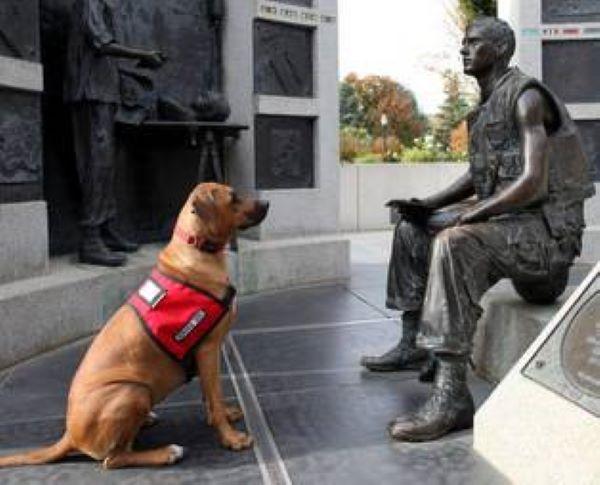Service dogs play a transformative role in the lives of many individuals, providing not only companionship but also essential support for those living with disabilities. In a world where independence and quality of life are paramount, service dogshave become trusted partners for people with various physical, emotional, and psychological needs. From assisting with mobility to offering comfort in times of distress, service dogs represent hope and freedom for countless individuals.
Yet, finding the right service dog and ensuring they are trained to meet specific needs can be daunting. Understanding how service dog training in your area works and what to expect is crucial for a successful partnership. Let’s explore the vital aspects of service dog ownership and training to empower those considering this life-changing decision.
Understanding the Role of Service Dogs in California
Service dogs are not ordinary pets—they are highly trained animals who perform specific tasks to assist people with disabilities. In California, these dogs are legally recognized and protected under the Americans with Disabilities Act (ADA), which allows them to accompany their handlers almost anywhere.
What distinguishes service dogs in California is their ability to perform tasks tailored to their owner’s disability. For example, some dogs are trained to retrieve items for individuals with limited mobility, while others provide deep pressure therapy for those experiencing anxiety or PTSD. Whether guiding the visually impaired, alerting them to medical conditions like seizures, or offering emotional support, these dogs enhance the independence and well-being of their handlers.
What You Need to Know About Service Dog Training in Your Area
A well-trained service dog doesn’t happen overnight; it requires a structured, patient, and compassionate approach. Service dog training in your area should be centered on the unique needs of both the dog and the handler. From basic obedience to advanced task training, it’s important to ensure the dog is capable of performing tasks that make a real difference in the handler’s daily life.
Training typically begins with obedience basics like sitting, staying, and recalling commands. Once the dog has mastered these fundamentals, trainers focus on task-specific actions related to the handler’s disability. It’s also important to consider that training doesn’t end after the dog has learned essential skills; ongoing reinforcement and practice ensure that both the dog and handler maintain a strong and effective relationship.
Finding a training facility or program in your area that specializes in service dogs is essential. Programs should focus on humane training methods, taking into account the temperament and abilities of each dog. Additionally, service dog training in your area should offer support for handlers throughout the training process, as this partnership requires mutual understanding and dedication.
The Process of Getting a Service Dog: Patience and Persistence
Getting a service dog involves a multi-step process that requires patience and commitment. First, potential handlers must determine whether they qualify for a service dog. The next step is identifying an organization or breeder that provides service dogs specifically trained for their disability. In California, service dog organizations often have waitlists due to high demand, but this waiting period can result in a dog that meets specific requirements and is a perfect match for the individual.
Once the dog is selected, the training journey begins. Some individuals choose to train the dog themselves, especially if they have experience in dog training, while others opt to work with professional trainers. In either case, the bond between the handler and the dog grows through training, and this relationship is key to the dog’s success as a service companion.
It’s worth noting that while some dogs may excel in basic obedience, not all dogs are suited to become service dogs. This makes it all the more important to work with experts in service dog training in your area to evaluate a dog’s temperament and potential before embarking on this important journey.
The Legal Landscape for Service Dogs in California
Service dogs in California enjoy strong legal protections under both state and federal law. The Americans with Disabilities Act (ADA) ensures that these dogs can accompany their handlers into public spaces, from grocery stores to airplanes. California law also reinforces these rights, making it illegal for businesses to deny access to a person with a service dog.
However, understanding the legal framework is only part of the puzzle. Service dog owners must be aware of their responsibilities too. The dog must be well-behaved, non-aggressive, and trained to perform specific tasks related to the handler’s disability. Additionally, the dog’s behavior in public must reflect its training, ensuring it doesn’t disrupt the environment or pose a safety risk.
For those navigating the legal requirements and seeking clarification, service dog training in your area can also serve as a valuable resource. Trainers often help educate handlers about their rights and responsibilities under the law, ensuring that they feel empowered to navigate the public sphere confidently with their service dog.
How Service Dog Training Enhances the Dog-Human Bond
One of the most beautiful aspects of owning a service dog is the deep bond that forms between the handler and the dog. This bond isn’t just about companionship; it’s about trust, communication, and mutual reliance. Service dog training in your area plays a critical role in fostering this relationship.
The process of training teaches the dog to understand its handler’s needs, but it also teaches the handler to communicate with the dog effectively. The relationship deepens through every step of the training process, with the handler learning how to cue the dog and the dog responding with precision and loyalty.
Handlers often report that their service dog becomes more than just a helper—it becomes an extension of themselves. This connection is why service dog training is so important. By working together to overcome challenges and learn new tasks, the bond between dogs and humans grows into something truly remarkable.
Why Proper Training Matters for Service Dogs
Imagine having a dog that could open doors, fetch medication, or calm you during an anxiety attack. Now imagine this dog isn’t properly trained. Without the right guidance and skills, even the most well-intentioned dog can struggle to perform its duties. That’s why service dog training in your area is essential.
Proper training ensures that the dog can reliably perform the tasks it has been assigned. It also teaches the dog to remain calm and focused in a variety of environments, from crowded shopping malls to quiet homes. A well-trained service dog can truly make a world of difference, providing independence, confidence, and security for its handler.
In addition, ongoing training keeps the dog’s skills sharp and helps to correct any behavioral issues that may arise. Service dogs are not immune to distractions or bad habits, so continuous reinforcement is key to maintaining their effectiveness. Finding service dog training in your area ensures that the dog’s training is consistent, tailored to their needs, and reinforced over time.
Conclusion:
How Service Dogs Change Lives
Service dogs offer an unparalleled level of support for individuals living with disabilities. Service dogs in California provide both practical assistance and emotional companionship, improving the quality of life for their handlers in profound ways. Whether helping with physical tasks or offering comfort during emotional distress, these dogs are trained to understand and meet their handler’s needs with unwavering loyalty.
The journey of training a service dog requires dedication, patience, and trust. It’s a partnership built on mutual respect and communication, where both dog and human grow together. Service dog training in your area plays an essential role in creating this bond, ensuring that both the handler and the dog have the skills they need for success.
For those considering a service dog, the investment in time, effort, and training is more than worth it. It’s a path to greater independence, comfort, and connection. To learn more about how to begin this journey, reach out to experts like Service Dog School of America.






